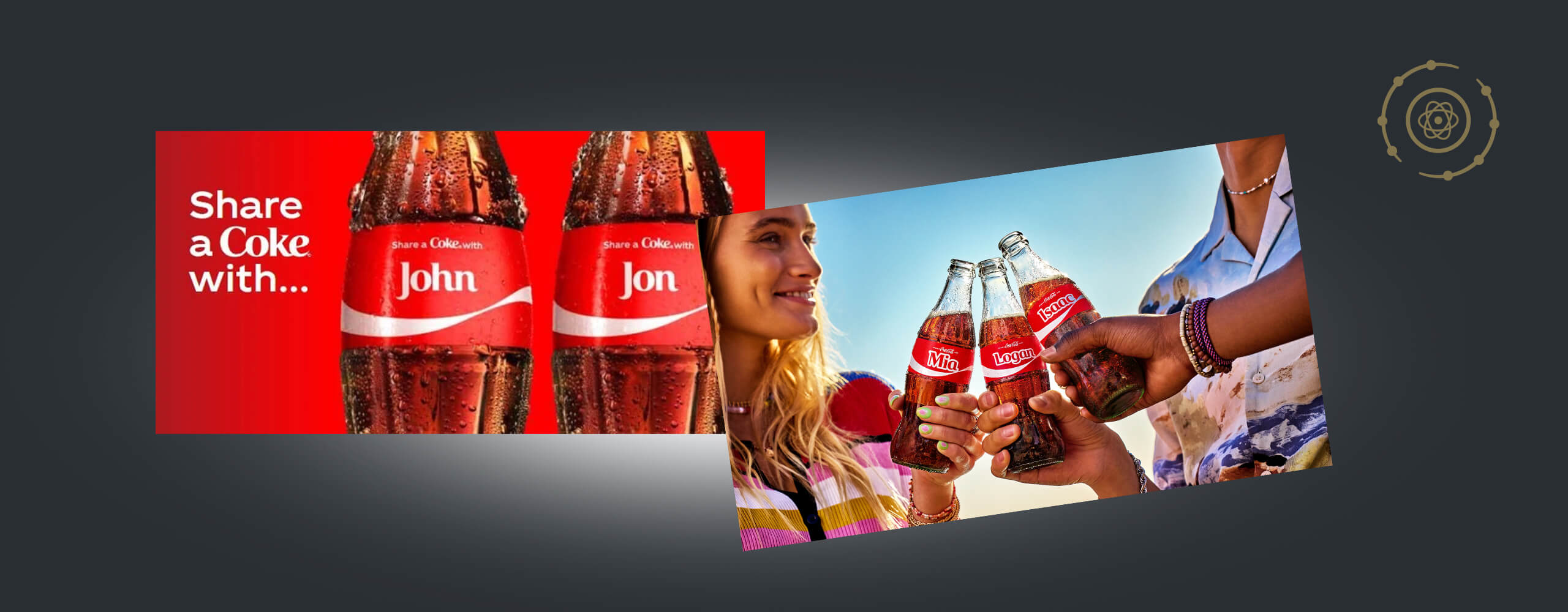|
Getting your Trinity Audio player ready... |
Coca-Cola, founded in 1886, has long been a trailblazer in global marketing, creating some of the most iconic advertising moments in history. From the “Hilltop” ad in 1971 to its timeless association with Father Christmas, their brand identity is rooted in happiness, sharing, and togetherness. Coca-Cola has continuously evolved to stay relevant across generations. One of its most enduring and human-centric campaigns, “Share A Coke,” captured hearts around the world by transforming a universal product into a personal experience. Proving once again why Coca-Cola is considered a master of emotional branding.
CLIENT
The “Share A Coke” campaign was first introduced in Australia in 2011 by Coca-Cola in partnership with the advertising agency Ogilvy Sydney. The concept was refreshingly simple: replace the iconic Coca-Cola logo on bottles and cans with popular first names, inviting consumers to “Share a Coke” with someone special. What began as a local initiative to reconnect with younger consumers soon became a global phenomenon, rolled out in over 80 countries across multiple languages and cultures, with tailored versions to suit local markets.
CHALLENGE
By the early 2010s, Coca-Cola was facing a familiar yet complex issue: maintaining cultural relevance in an increasingly fragmented, health-conscious, and digitally connected world. Younger audiences were shifting towards niche, health-forward beverages and showing signs of emotional detachment from legacy brands. Coca-Cola needed a campaign that would re-establish a personal connection, remind people of the brand’s core values, and generate genuine excitement, especially among millennials and Gen Z. As digital sharing became a dominant part of social life, Coca-Cola recognised the need to integrate physical product engagement with social media virality.
CHANGE
To bring the campaign to life, Coca-Cola printed hundreds of the most common first names onto millions of bottles and cans. The brand also installed interactive kiosks where consumers could personalize Coke bottles with any name, nickname, or term of endearment. This tangible customization gave consumers a sense of ownership and made every Coke feel uniquely theirs.
Social media platforms played a critical role in amplifying the campaign. Consumers were encouraged to find and share their names on Coke bottles, tagging posts with hashtags like #ShareaCoke. The campaign sparked a massive wave of user-generated content, with people posting photos, videos, and stories that turned Coca-Cola into a conduit for personal storytelling.
The results were staggering:
- In Australia, Coca-Cola saw a 7% increase in consumption among young adults—the brand’s core target.
- In the U.S., the campaign led to a 2% increase in sales after years of decline.
- Globally, the campaign generated over 500,000 photos shared with the hashtag in the first year and boosted Coca-Cola’s Facebook traffic by 870%.
The campaign was revived year after year, with variations that included surnames, song lyrics, holiday destinations, and colloquial phrases—keeping it fresh while preserving the emotional core.
CONCLUSION
“Share A Coke” was a groundbreaking campaign because it flipped the script on traditional branding. It removed the so-thought “untouchable” brand logo and replaced it with the consumer’s identity. It made Coca-Cola about “you” and “us,” not just “it.” It remains a textbook example of how simple ideas, executed insightfully and at scale, can create long-term brand love and reshape the conversation around legacy products. For marketers, “Share A Coke” is a reminder that the most powerful campaigns are those that make people feel seen, valued, and part of something bigger.
Nucleus Vision Digital and Design Legends
A full-service Marketing and Design Agency
hero@nucleusv.com
www.nucleusvision.digital


